
San Antonio: The Heart of Cali's Cultural Charm
Discover San Antonio in Cali, Colombia: A Bohemian Haven of Art, Culture, and Culinary Delights with Stunning Views and Lively Nightlife.
San Antonio, a picturesque neighborhood in Cali, Colombia, is a treasure trove of cultural experiences and historical richness. This vibrant area, known for its colonial architecture, cobblestone streets, and bohemian vibe, attracts tourists looking for an authentic taste of the city. The neighborhood's focal point is the San Antonio Church, perched atop a hill, offering panoramic views of Cali's skyline and a serene spot for reflection. San Antonio is renowned for its lively arts scene. The streets are lined with galleries, artisan shops, and mural-covered walls that showcase the talents of local artists. Visitors can immerse themselves in the creative atmosphere, attending art workshops or purchasing unique souvenirs. The neighborhood also hosts various cultural events and festivals throughout the year, making it a dynamic destination for those keen on experiencing the local culture. Food lovers will find San Antonio a culinary paradise. The area boasts a plethora of dining options, ranging from traditional Colombian eateries to trendy cafes and international restaurants. Street food vendors add to the flavor of the neighborhood, offering delicious local snacks like empanadas and arepas. As the sun sets, San Antonio transforms into a lively nightlife hub, with bars and clubs playing salsa music, inviting both locals and tourists to dance the night away.
Local tips in San Antonio
- Visit early in the morning or late afternoon to avoid the midday heat and capture the best photos.
- Wear comfortable shoes as the cobblestone streets can be uneven and steep.
- Explore local art galleries and workshops for unique souvenirs and direct interactions with artists.
- Try the local street food, especially empanadas and arepas, for an authentic culinary experience.
- Join a salsa class or visit a local club to experience Cali's famous salsa dancing culture.
San Antonio: The Heart of Cali's Cultural Charm
San Antonio, a picturesque neighborhood in Cali, Colombia, is a treasure trove of cultural experiences and historical richness. This vibrant area, known for its colonial architecture, cobblestone streets, and bohemian vibe, attracts tourists looking for an authentic taste of the city. The neighborhood's focal point is the San Antonio Church, perched atop a hill, offering panoramic views of Cali's skyline and a serene spot for reflection. San Antonio is renowned for its lively arts scene. The streets are lined with galleries, artisan shops, and mural-covered walls that showcase the talents of local artists. Visitors can immerse themselves in the creative atmosphere, attending art workshops or purchasing unique souvenirs. The neighborhood also hosts various cultural events and festivals throughout the year, making it a dynamic destination for those keen on experiencing the local culture. Food lovers will find San Antonio a culinary paradise. The area boasts a plethora of dining options, ranging from traditional Colombian eateries to trendy cafes and international restaurants. Street food vendors add to the flavor of the neighborhood, offering delicious local snacks like empanadas and arepas. As the sun sets, San Antonio transforms into a lively nightlife hub, with bars and clubs playing salsa music, inviting both locals and tourists to dance the night away.
Iconic landmarks you can’t miss
San Antonio Chapel
Discover the serene beauty of San Antonio Chapel, a cultural gem nestled in Cali's vibrant heart, perfect for relaxation and exploration.

Iglesia de San Antonio
Experience the cultural and spiritual heart of Cali at the stunning Iglesia de San Antonio, a must-visit church surrounded by beautiful parks.
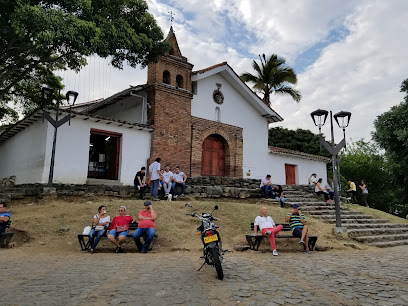
Parque San Antonio
Explore the serene beauty and cultural richness of Parque San Antonio, a perfect urban escape in Cali, Colombia, ideal for relaxation and leisure.

Colina de San Antonio Park
Experience the tranquility of Colina de San Antonio Park, a lush oasis in Cali, Valle del Cauca, perfect for relaxation and cultural exploration.

Teatrino San Antonio
Experience the vibrant cultural heart of Cali at Teatrino San Antonio, where music, dance, and community come alive in an unforgettable setting.

Monumento a la Maceta
Discover the Monumento a la Maceta in Cali: a vibrant monument celebrating local culture and artistry amidst the beautiful landscapes of Valle del Cauca.

La Loma de San Antonio- Cali-Valle del Cauca- Colombia.
Explore the vibrant artistry and stunning views of La Loma de San Antonio, a captivating neighborhood in Cali, Colombia.

Mirador de San Antonio
Discover the breathtaking views and vibrant culture at Mirador de San Antonio, a must-visit observation deck in Cali, Colombia.

Artesanos de San Antonio
Explore the vibrant artisan market at Artesanos de San Antonio in Cali, where culture meets creativity amidst stunning natural beauty.
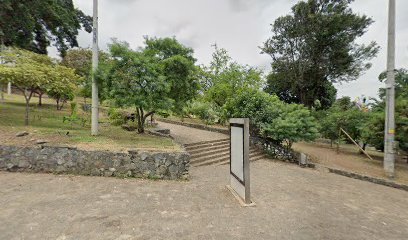
Monumento a Isaías Gamboa
Explore the Monumento a Isaías Gamboa in Cali, where history and culture converge in a stunning tribute to a Colombian icon.
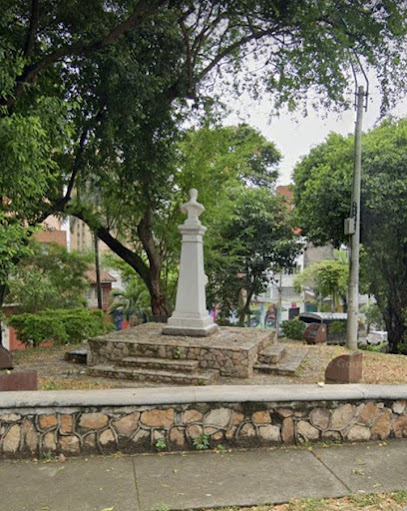
Unmissable attractions to see
San Antonio Chapel
Discover the serene beauty and vibrant culture of San Antonio Chapel, a city park in Cali, Valle del Cauca, perfect for relaxation and exploration.
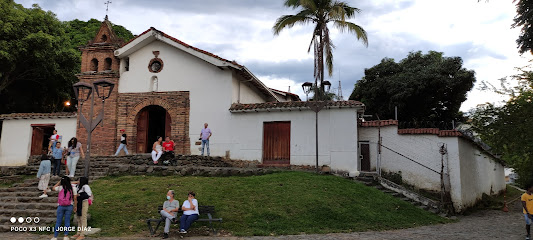
Iglesia de San Antonio
Explore the stunning Iglesia de San Antonio in Cali, a vibrant cultural center and architectural marvel set against a breathtaking backdrop of the Andes.

Parque San Antonio
Experience the beauty and culture of Cali at Parque San Antonio, a serene park offering lush gardens, stunning views, and a vibrant local atmosphere.

Teatrino San Antonio
Experience the vibrant culture of Cali at Teatrino San Antonio, a cultural gem featuring live performances and local artistry.

La Loma de San Antonio- Cali-Valle del Cauca- Colombia.
Explore La Loma de San Antonio, a picturesque neighborhood in Cali, Colombia, known for its vibrant art scene and stunning city views.

Artesanos de San Antonio
Discover the vibrant artisan culture of Cali at Artesanos de San Antonio, where creativity and craftsmanship come together in a stunning park setting.

Essential places to dine
El Zaguán de San Antonio
Discover authentic Colombian flavors at El Zaguán de San Antonio in Cali's charming San Antonio neighborhood.

Zumaia
Experience exquisite Colombian cuisine at Zumaia in Cali – where tradition meets innovation for an unforgettable dining adventure.
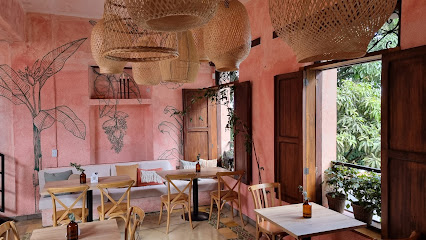
Trilogía
Discover Trilogía in Cali - where exquisite flavors meet elegant dining in the heart of San Antonio.

Waunana Restaurante
Discover authentic Colombian flavors at Waunana Restaurante in Cali - a culinary experience not to be missed.
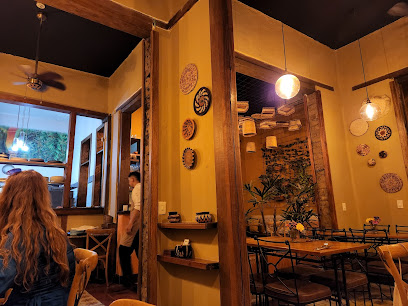
Níspero Restaurante, San Antonio, Cali
Discover authentic Colombian cuisine at Níspero Restaurante in San Antonio, Cali – where every dish tells a story.
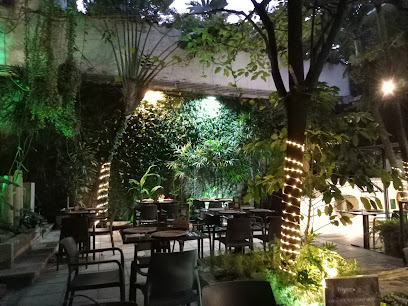
Parador San Antonio Arepas
Discover authentic Colombian flavors at Parador San Antonio Arepas, where every bite takes you on a culinary journey through Cali's rich heritage.

POSADA Y RESTAURANTE LA SICILIA
Experience authentic Italian cuisine at Posada y Restaurante La Sicilia in Cali – where every dish tells a story of flavor and tradition.

Tierra Natal Cocina de origen
Discover authentic Colombian cuisine at Tierra Natal Cocina de Origen in Cali - where tradition meets flavor for an unforgettable dining experience.

Restaurante San Antonio
Discover authentic Colombian soul food at Restaurante San Antonio in Cali's vibrant San Antonio neighborhood.

Fragola
Experience authentic Mediterranean cuisine at Fragola in Cali—where every dish tells a story of flavor and tradition.
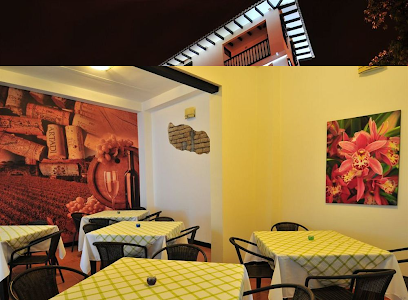
Markets, malls and hidden boutiques
Butterfly tongue - Artisan Ice Cream Parlor
Discover the flavors of Cali at Butterfly Tongue, where artisan ice cream meets sweet creativity in a charming atmosphere.

Lloret de Mar Boutique
Discover the vibrant Lloret de Mar Boutique, your go-to destination for stylish beachwear and unique gifts in a charming coastal town.

Here We Go
Explore Here We Go for unique Colombian souvenirs, handcrafted treasures, and a taste of Cali's vibrant culture.

Bazaar Creativos
Explore Bazaar Creativos, Cali's charming used clothing store, for stylish finds and unique vintage treasures at affordable prices.

Casa artesanal y cultural
Discover unique handcrafted treasures at Casa Artesanal y Cultural in Cali, where Colombian artistry meets cultural heritage.

Ekia Artesanias Cali
Explore the vibrant world of handmade Colombian crafts at Ekia Artesanias, where each souvenir tells a story of culture and tradition.

Pulguero Encantado
Discover the vibrant fashion scene of Cali at Pulguero Encantado, where culture meets style in a unique clothing experience.

Prendas Únicas San Antonio
Explore the charm of sustainable shopping at Prendas Únicas San Antonio in Cali, where unique vintage treasures await every fashion enthusiast.

Flea market shop liz San Antonio
Explore Flea Market Shop Liz in San Antonio for unique vintage clothing and accessories in a vibrant, culturally rich atmosphere.

shop fire
Explore the vibrant culture of Cali at Shop Fire, your go-to destination for unique Colombian crafts and artisanal goods.

Essential bars & hidden hideouts
Bourbon St. Pub
Experience the vibrant nightlife of Cali at Bourbon St. Pub, where great drinks, delicious food, and live music create unforgettable memories.

El Zaguán de San Antonio
Experience the rich flavors of Colombian cuisine at El Zaguán de San Antonio, a hidden gem in Cali's vibrant San Antonio neighborhood.

La Colina Tertuliadero
Experience the vibrant culture of Cali at La Colina Tertuliadero, where local flavors meet a lively atmosphere for an unforgettable night.
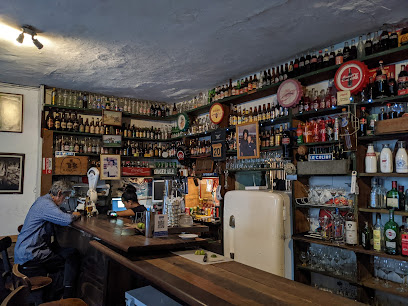
Rock City Bar
Discover the vibrant flavors of Cali at Rock City Bar, where delicious grilled dishes meet a lively atmosphere in the heart of the city.
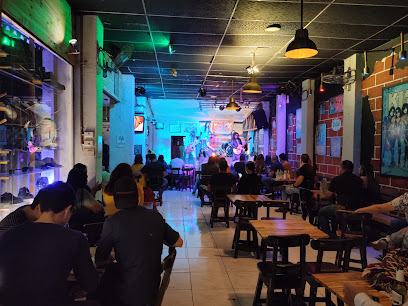
Punto Baré
Experience the lively ambiance and local flavors at Punto Baré, a must-visit bar in the heart of Cali's nightlife.

Bowie Classic Bar
Bowie Classic Bar: Your Destination for Affordable Drinks and Lively Nights in Cali, Valle del Cauca.

12 Monos Café bar
Experience the vibrant blend of art and flavor at 12 Monos Café Bar in Cali, a must-visit for art lovers and food enthusiasts.

Chuspa Charladero Pub, San Antonio, Cali
Experience the authentic flavors of Colombia at Chuspa Charladero Pub in the charming San Antonio neighborhood of Cali, a perfect blend of tradition and modernity.

GRANILOCO CALI PARQUE SAN ANTONIO
Experience the vibrant nightlife of Cali at Graniloco, where expertly crafted cocktails and a lively atmosphere await in Parque San Antonio.

Zona Lounge
Discover the vibrant taste of Cali at Zona Lounge, where authentic Colombian grilled cuisine meets a lively atmosphere.

Local Phrases
-
- HelloHola
[oh-lah] - GoodbyeAdiós
[ah-dee-ohs] - YesSí
[see] - NoNo
[noh] - Please/You're welcomePor favor/De nada
[por fah-vor/deh nah-dah] - Thank youGracias
[grah-see-ahs] - Excuse me/SorryPerdón/Lo siento
[pair-dohn/loh see-en-toh] - How are you?¿Cómo estás?
[koh-moh ehs-tahs] - Fine. And you?Bien. ¿Y tú?
[byen. ee too] - Do you speak English?¿Hablas inglés?
[ah-blahs een-glays] - I don't understandNo entiendo
[noh ehn-tee-ehn-doh]
- HelloHola
-
- I'd like to see the menu, pleaseMe gustaría ver el menú, por favor
[meh goo-stah-ree-ah vehr ehl meh-noo, poor fah-vor] - I don't eat meatNo como carne
[noh koh-moh kahr-neh] - Cheers!¡Salud!
[sah-lood] - I would like to pay, pleaseMe gustaría pagar, por favor
[meh goo-stah-ree-ah pah-gahr, poor fah-vor]
- I'd like to see the menu, pleaseMe gustaría ver el menú, por favor
-
- Help!¡Ayuda!
[ah-yoo-dah] - Go away!¡Vete!
[veh-teh] - Call the Police!¡Llama a la policía!
[yah-mah ah lah poh-lee-see-ah] - Call a doctor!¡Llama a un médico!
[yah-mah ah oon meh-dee-koh] - I'm lostEstoy perdido
[ehs-toy pair-dee-doh] - I'm illEstoy enfermo
[ehs-toy ehn-fehr-moh]
- Help!¡Ayuda!
-
- I'd like to buy...Me gustaría comprar...
[meh goo-stah-ree-ah kohm-prahr] - I'm just lookingSolo estoy mirando
[soh-loh ehs-toy mee-rahn-doh] - How much is it?¿Cuánto cuesta?
[kwan-toh kwehs-tah] - That's too expensiveEso es demasiado caro
[eh-soh ehs deh-mah-see-ah-doh kah-roh] - Can you lower the price?¿Puedes bajar el precio?
[pweh-dehs bah-har ehl pree-syoh]
- I'd like to buy...Me gustaría comprar...
-
- What time is it?¿Qué hora es?
[keh oh-rah ehs] - It's one o'clockEs la una
[ehs lah oo-nah] - Half past (10)Y media (10)
[ee meh-dee-ah (deez)] - MorningMañana
[mah-nyah-nah] - AfternoonTarde
[tahr-deh] - EveningNoche
[noh-cheh] - YesterdayAyer
[ah-yehr] - TodayHoy
[oy] - TomorrowMañana
[mah-nyah-nah] - 1Uno
[oo-noh] - 2Dos
[dohs] - 3Tres
[trehs] - 4Cuatro
[kwah-troh] - 5Cinco
[seen-koh] - 6Seis
[says] - 7Siete
[see-eh-teh] - 8Ocho
[oh-choh] - 9Nueve
[nweh-veh] - 10Diez
[dyehs]
- What time is it?¿Qué hora es?
-
- Where's a/the...?¿Dónde está el/la...?
[dohn-deh ehs-tah ehl/lah] - What's the address?¿Cuál es la dirección?
[kwal ehs lah dee-rehk-syohn] - Can you show me (on the map)?¿Puedes mostrarme (en el mapa)?
[pweh-dehs mohs-trar-meh (ehn ehl mah-pah)] - When's the next (bus)?¿Cuándo es el próximo (autobús)?
[kwan-doh ehs ehl proh-see-moh (ow-toh-boos)] - A ticket (to ....)Un tiquete (a ....)
[oon tee-keh-teh (ah)]
- Where's a/the...?¿Dónde está el/la...?
History of San Antonio
-
San Antonio, one of the oldest neighborhoods in Cali, was established during the Spanish colonial period in the 16th century. It served as a residential area for Spanish settlers and became a focal point for the burgeoning city. The neighborhood's layout, characterized by narrow streets and colonial architecture, reflects the urban planning of the time.
-
In the late 19th and early 20th centuries, San Antonio emerged as a cultural hub in Cali. It became known for its vibrant artistic community, attracting painters, musicians, and writers. The neighborhood's central plaza, Plaza de San Antonio, became a gathering place for cultural events and social gatherings, fostering a sense of community and artistic expression.
-
San Antonio is renowned for its well-preserved colonial architecture, including the iconic San Antonio Church, built in 1806. The church is a symbol of the neighborhood and reflects the religious and cultural practices of the time. The architectural style of San Antonio has influenced urban development in Cali, showcasing a blend of colonial and modern influences.
-
Throughout the 20th century, San Antonio underwent significant changes due to urbanization and migration. As Cali expanded, the neighborhood experienced an influx of residents from different regions, which enriched its cultural tapestry. This period saw the establishment of various community initiatives aimed at preserving the neighborhood's heritage amidst rapid development.
-
In recent years, San Antonio has experienced a revival as a trendy neighborhood known for its bohemian atmosphere. Efforts to maintain its historical character have led to the restoration of many old houses and an increase in cultural events. The neighborhood is now celebrated for its vibrant arts scene, including galleries, cafes, and music venues, attracting both locals and tourists.
San Antonio Essentials
-
San Antonio is centrally located in Cali, making it accessible from various neighborhoods. To reach San Antonio from the airport (Alfonso Bonilla Aragón International Airport), you can take a taxi or arrange for a shuttle service, which takes about 30 to 40 minutes, depending on traffic. From other neighborhoods, local buses and taxis are available. The MIO (Masivo Integrado de Occidente) system offers a direct bus line to San Antonio, with multiple stops throughout the city.
-
San Antonio is a walkable neighborhood, ideal for exploring its charming streets and local attractions. The MIO bus system is efficient and connects to many parts of Cali, making it easy to navigate. Bicycles can be rented from local shops, and some areas have bike lanes. Taxis and rideshare services like Uber are also readily available for longer distances or late-night travel.
-
San Antonio is generally safe for tourists, but like any urban area, caution is recommended. It's advisable to avoid walking alone at night, especially in less populated areas. Areas nearby, such as El Centro, can have higher crime rates, particularly for petty theft. Stay vigilant with your belongings, especially in crowded places or during events.
-
In case of an emergency, dial 123 for police, fire, or medical assistance. Pharmacies and hospitals are available in the area. It is wise to have travel insurance that covers emergencies. For minor health issues, local pharmacies can provide over-the-counter medications. Always keep a list of emergency contacts and your accommodation details handy.
-
Fashion: Do wear light, comfortable clothing appropriate for the warm climate, but avoid overly revealing outfits. Religion: Do respect local customs, especially when visiting churches. Always cover your shoulders and knees. Public Transport: Do be considerate and give up your seat to those in need. Don't engage in loud conversations on public transport. Greetings: Do greet locals with a friendly 'buenos días' or 'buenas tardes'. Don't forget to smile and be polite. Eating & Drinking: Do try local dishes like sancocho and empanadas. Don't drink tap water; always opt for bottled water.
-
To experience San Antonio like a local, visit the vibrant artisan markets and local cafes scattered throughout the neighborhood. Engage in conversations with shop owners, as many are eager to share stories about their crafts. Don't miss the stunning views from the San Antonio hill at sunset. Participate in local events or festivals when possible, as they provide a glimpse into the culture and community spirit.
-
Colombians are known for their hospitality. When meeting locals, a firm handshake and maintaining eye contact are common. If invited to a home, it's customary to bring a small gift, such as flowers or sweets. During meals, wait for the host to begin before you start eating, and don't rush through your meal, as dining is often seen as a social event.
-
San Antonio is home to numerous restaurants and cafes offering traditional Colombian cuisine, as well as international options. For an authentic experience, try local eateries like 'La Candelaria' or 'El Solar.' Also, explore street food options, but choose vendors that appear clean and busy. Always ask for recommendations from locals for hidden gems.
Nearby Cities to San Antonio
-
Things To Do in Popayán
-
Things To Do in Neiva
-
Things To Do in Armenia
-
Things To Do in Pereira
-
Things To Do in Ibagué
-
Things To Do in Manizales
-
Things To Do in Pasto
-
Things To Do in Bogotá
-
Things To Do in Medellín
-
Things To Do in Villavicencio
-
Things To Do in Ibarra
-
Things To Do in Otavalo
-
Things To Do in Tunja
-
Things To Do in Quito
-
Things To Do in Mindo








